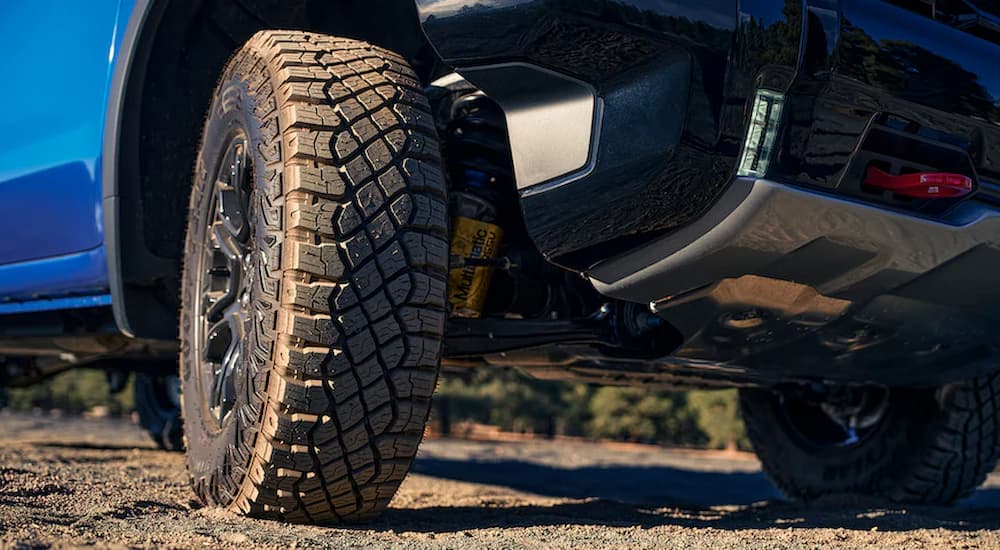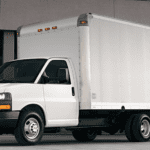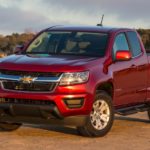Searching for used trucks for sale turns up a seemingly endless array of options, from utilitarian workhorses with minimal comforts to lifted powerhouses that can confidently answer the call of the wild. For many pickup drivers, these lifted road warriors offer the most appeal. They’re aesthetically striking and presumably more capable because their taller stances accommodate beefier tires and provide better ground clearance. These characteristics make it easy to see why lifted trucks are among the most popular on any used truck lot nationwide. But there’s more to a lifted truck than meets the eye.
Many assume lifted trucks are a recent trend, but that isn’t the case. More importantly, not all lifted trucks are equally capable. Lifted vehicles were born of necessity decades ago. There are different types of lifts to meet different purposes. Where do you fit in all this?
Born of Necessity: The History of Lifted Vehicles
Can you imagine driving a vehicle without shock absorbers? A century ago, the first automobiles were modern innovations that transformed every aspect of our lives. However, they weren’t necessarily designed for comfort or agility. That was beside the point at the time because they offered more capability and efficiency than what they had at the time; even without shock absorbers, they were legions better than horses.
Without shock absorbers, vehicles were limited to life on roads, but that wasn’t practical for many people, considering the versatility that horses offered. Because there weren’t many paved roads, people needed to be able to take their automobiles off-road, inspiring modifications that enhanced their ability to travel on rugged terrain and haul heavier equipment. By the dawn of World War II, these needs were even more pressing, with military troops requiring vehicles that offered heightened performance on any terrain, paved or not. The idea of a lifted vehicle was born.
Lifted vehicles became a vital tool for the American military in World War II, improving our tactics and earning widespread implementation across the globe. After the war ended, automakers turned their attention to the civilian market, with Land Rover, Jeep, and Ford introducing the first lifted models. With icons like the Bronco, Wagoneer, and Land Cruiser boasting better handling and greater versatility, lifted vehicles became increasingly popular.
Eventually, they gave rise to another niche that took these lifts to an extreme–Monster Trucks. Today, Monster Trucks have the market cornered on extreme lifts, but automakers continue to recognize the utility of lifted vehicles outside the mud pit. Instead of requiring drivers to turn to aftermarket lift kits, more and more vehicles have been rolling off the production line with factory-installed lifts. This offers many advantages, especially when looking for used trucks for sale because the lifts are factory-fitted to the vehicle and backed by the manufacturer. More importantly, you’re not faced with the additional cost of buying and installing the lift, which saves you valuable time you can spend testing your used truck’s capability long after the pavement ends.
Types of Lifts
As you shop your local dealership for a used truck, it’s important to recognize that not all lifts are the same. Unless you’re intimately familiar with lifts, they tend to look similar, positioning a truck higher off the ground and making room for larger tires. There’s a significant difference in how different lifts accomplish this feat, though, specifically how they interact with the truck’s other components once they are installed.
Body Lift
If you find a used truck for sale with a lift, you may discover it has an aftermarket body lift. Body lifts are incredibly popular because they’re easy to install—most truck owners can tackle the job themselves. Moreover, they’re also the most affordable way to change the aesthetic of a truck.
As the name implies, a body lift raises the truck’s body without altering its suspension. The lift increases the truck’s ride height, giving it a taller stance and typically making it possible to add larger tires. Since the lift doesn’t change the suspension or any other performance-related components, it doesn’t actually increase the truck’s ground clearance or alter its handling or ride quality. You can expect the same factory ride, with the truck’s body lifted anywhere from two to five inches.
Since a body lift doesn’t change how a truck handles, they’re often installed for aesthetic purposes. Installation is relatively easy, taking anywhere from a few hours to a full day in your home garage. Again, the installation is straightforward because you’re raising the truck’s body off the frame using spacers or blocks rather than changing the stock suspension to increase the ride height.
Suspension Lift
Any used truck with a factory-installed suspension lift is a hot commodity because the hard work has already been done. Unlike a body lift, a suspension lift changes nearly every aspect of a truck’s handling and capability because it does more than just lift the body. A suspension lift raises the height of the truck’s suspension, causing a chain reaction that readies the truck for off-road conditions, thus the appeal of lifted trucks among off-roaders and overlanders.
Suspension lifts are more expensive than body lifts, which makes sense considering how extensive the installation is and how much is involved. Instead of tackling a suspension lift in your garage, a reputable mechanic should oversee the job of adding new springs, control arms, shocks, and other suspension-related components. Once finished, the suspension lift increases the truck’s ride height and improves its ground clearance, changing its center of gravity and increasing its body roll (how well it balances as it goes around sharp corners). As a result, a suspension lift affects the truck’s handling, whether it’s a two-inch or ten-inch lift.
While the complexity and expense of a suspension lift make it seem less appealing than a body lift, it’s impossible to ignore the advantages if you’re looking to venture off the pavement. By raising the suspension, the lift adds to the truck’s ground clearance, meaning you can tackle more technical terrain without fear of doing significant or costly damage to the underbody. Likewise, a suspension lift lets you add larger tires, a must-have for tackling trails where getting stuck in the mud is likely.
Leveling Kits
A leveling kit is often categorized as a type of lift, but that can be misleading. Every truck rolls off the factory floor with a stock stance that positions the front of the truck lower than the rear. This is strategic because truck manufacturers anticipate the truck towing heavy loads, lowering the front to accommodate the weight on the hitch and even the weight of the cargo in the bed. Likewise, a lower front end also improves a truck’s aerodynamics.
Many truck owners opt to add a leveling kit that does exactly as its name implies by leveling the front of the truck with the back. Leveling kits can raise the front of the truck as much as two inches. But what’s the advantage of adding this type of kit? For some, a leveling kit is purely for aesthetics, but it can also serve a practical purpose if you plan to add a winch or other provisions to the front bumper. For example, a snow plow and a winch are incredibly heavy and can cause the front of a truck to sag, which a leveling kit can mitigate.
Lifting and Leveling: Finding the Perfect Used Truck
Lifted trucks aren’t a modern invention inspired by our insatiable need to venture off the beaten path. Lifted vehicles were born of necessity, serving a critical purpose to our military during World War II. This practical development eventually made its way to civilian vehicles as American drivers discovered the perks of driving taller and more capable vehicles.
Today, as you shop for a used truck, be mindful of how the truck has been lifted. Is it a factory-installed suspension lift backed by the manufacturer? Or is it an aftermarket body kit that ensures stock performance and handling? Whichever the case, arming yourself with knowledge and paying keen attention to the details of your potential next workhorse sets you up for greater success and a smarter investment behind the wheel.




